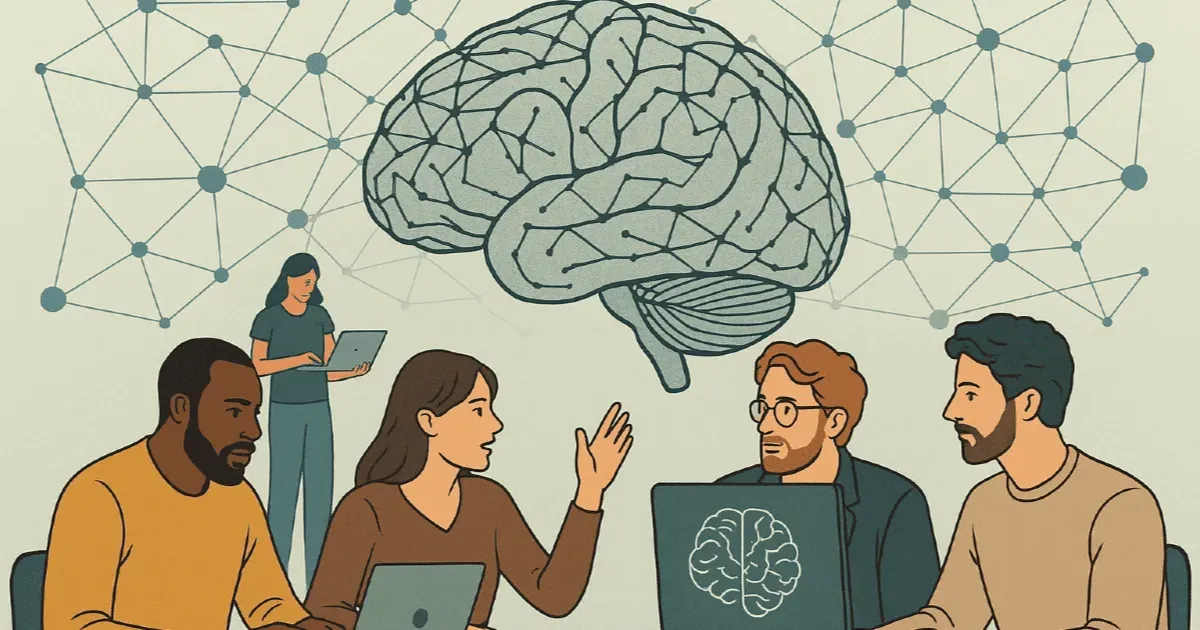Blockchains are great at being secure—but not so great at being smart. Predictive intelligence could change that by helping networks avoid congestion, stop scams, and work faster for users.
Blockchain has come a long way. What started out as a simple idea—a decentralized ledger that anyone could verify—is now powering everything from digital money to NFTs to entire financial systems.
But for all its progress, blockchain still has a problem: it’s reactive. It waits for things to happen before it responds. And in a world where users expect speed and fluid experiences, that delay can be a dealbreaker.
This is where predictive intelligence comes in. And it might just be the upgrade blockchain has been missing.
The Problem: Blockchain Is Always One Step Behind
Let’s say a new token launches and thousands of people try to buy it at the same time. What happens? The network slows down. Fees spike. Transactions fail. It’s a mess.
This isn’t rare. From NFT mints to DeFi launches, these traffic spikes happen often. The problem? Blockchains react after the fact. They’re designed to be secure and reliable but not necessarily smart.
And in tech, that delay matters. Traditional platforms like Google or Amazon can adjust in real-time. They move traffic around, predict what users will do next, and scale before anything breaks. Web3 doesn’t work like that yet.
So, what is predictive intelligence?
At its core, predictive intelligence means using data to make smart guesses about what’s going to happen before it happens.
You’ve probably seen this without realizing it. Your phone suggests routes when you open Maps. YouTube lines up videos you’ll probably click. That’s predictive intelligence in action.
Now imagine that concept applied to blockchain. A system that could
- Detect when a surge of users is coming
- Adjust gas fees ahead of time
- Warn dApps or wallets to prepare
- Even flag suspicious transactions before they get mined
This isn’t science fiction. It’s already possible. But it’s not standard practice in Web3 yet.
Predictive Infrastructure: What That Actually Means
For blockchain to get smarter, it needs a new layer one that watches what’s happening across the network and uses that data to plan ahead.
This is what people mean by predictive infrastructure.
It’s not a product. It’s a mix of tools and systems that allow a blockchain to:
- Monitor past behavior
- Spot patterns in usage
- Make real-time suggestions or changes based on that info
Think of it like giving the blockchain a nervous system and a brain, not just a ledger and a clock.
Real Use Cases That Could Actually Help
This isn’t just about making things faster. It could change how entire blockchain systems work. Here are a few examples of what predictive intelligence on blockchain could do:
1. Avoid Traffic Jams
Instead of waiting for the network to get clogged, predictive tools could alert users or shift transaction paths ahead of time, keeping things smooth even during busy hours.
2. Stop Scams Early
AI models could learn what typical fraud or exploit patterns look like and warn people before they click “approve” on a shady contract.
3. Improve Wallet UX
Your wallet could start to feel more like a smart assistant, remembering what you do often, preparing transactions in advance, or showing gas fees before you even type an amount.
4. Keep Networks Cheaper
By predicting when a chain is about to get busy, validators could pre-allocate resources or adjust incentives so that gas fees stay manageable.
All of this adds up to a faster, more useful blockchain experience—the kind that everyday users actually want.
What It’ll Take to Get There
Making this shift isn’t as simple as plugging in a chatbot.
Blockchain developers would need to rethink how their systems operate. That might include:
- Building better data indexing tools to track usage
- Using off-chain analytics that don’t slow things down
- Training machine learning models to “understand” what users do
- Creating safeguards so the system doesn’t make bad calls
And maybe most importantly: doing all this without giving up the core values of blockchain decentralization, transparency, and control.
So why aren’t we doing this already?
Honestly? Because it’s hard.
Blockchain is built on simple, deterministic rules. That’s what makes it reliable. Predictive systems are the opposite; they rely on probability, assumptions, and constant adjustments.
There’s also a trust issue. People don’t want AI or predictive tools messing with their money unless they know it’s done safely and fairly.
And some in the crypto world don’t like the idea of systems that try to guess user behavior. It feels too close to surveillance.
But here’s the thing: centralized apps already do this every day. If blockchain wants to compete, it’ll have to get smarter too without compromising its principles.
What’s Happening Right Now
Some teams are already working on this behind the scenes.
- A few Layer 1 and Layer 2 chains are exploring ways to monitor activity and optimize routing in real time.
- Wallet providers are looking into AI plugins that could suggest safer interactions or faster signing paths.
- Infrastructure companies are building tools that combine predictive analytics with decentralized architecture, trying to find the right balance between smart and trustless.
None of this is mainstream yet. But the momentum is building.
The Bigger Picture
Right now, Web3 still feels clunky. Most dApps lag behind the ease of use that people are used to from regular apps.
If predictive systems can help fix that even a little, they could be the thing that finally helps blockchain cross into the mainstream.
It’s not about replacing decentralization. It’s about making it usable.
What Comes Next?
As more data becomes available and as AI tools get cheaper to run, you’ll likely see predictive logic pop up in more places—wallets, dashboards, maybe even governance systems.
The key will be doing it in a way that’s transparent and open-source so people can trust the systems, even if they don’t always understand how they work.
It’ll take time. But it’s coming.
Final Thoughts
We don’t need blockchain to become Google. But we do need it to grow up a little.
Right now, it’s too slow, too reactive, and too easy to break when a lot of people show up at once. Predictive intelligence could be the answer, helping networks see around the corner and adapt before things go wrong.
It won’t be perfect. But neither is the current system.
And maybe that’s the point: to build a blockchain that learns, adjusts, and actually gets better over time.
Because if Web3 is going to be part of our future, it has to act like it.





